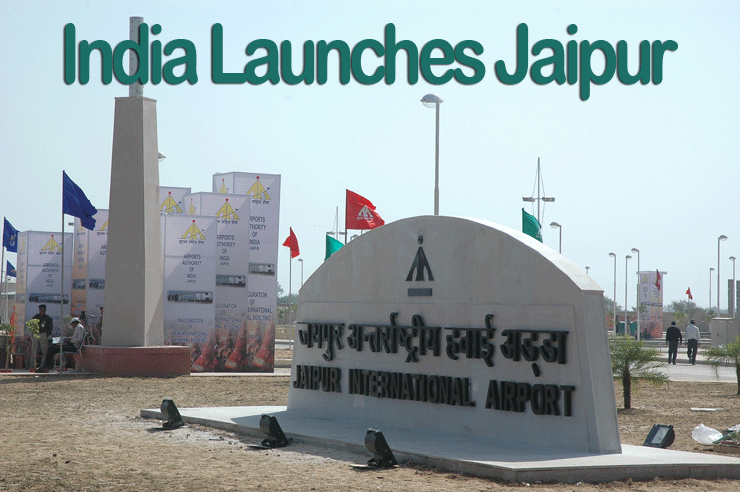| 
 A
major dampener for the air cargo sector in India is infrastructure or
rather the lack of it. While industry pundits have been forecasting that
air freight will rise 20 percent by 2012, major players like Kingfisher
Xpress, with its recently started door-to-door cargo delivery services,
Jet Airways, Air India and even Capt. Gopinath’s Deccan 360 have
found the going tough. Each one of them believes that the biggest factor
hampering the growth is the lack of infrastructure. With the prediction
that India's GDP growth will be more than 9 percent per year, and consumer
spending at a growth rate of 12 percent per year, the country’s
logistics industry is expected to grow at more than 20 percent per year
over the next three years. A
major dampener for the air cargo sector in India is infrastructure or
rather the lack of it. While industry pundits have been forecasting that
air freight will rise 20 percent by 2012, major players like Kingfisher
Xpress, with its recently started door-to-door cargo delivery services,
Jet Airways, Air India and even Capt. Gopinath’s Deccan 360 have
found the going tough. Each one of them believes that the biggest factor
hampering the growth is the lack of infrastructure. With the prediction
that India's GDP growth will be more than 9 percent per year, and consumer
spending at a growth rate of 12 percent per year, the country’s
logistics industry is expected to grow at more than 20 percent per year
over the next three years.
It is in such circumstances that the establishment
of a new airport near Delhi brings good news for the air freight industry
in the north of India. The new airport at Viratnagar, 63 km from the capital
of Rajasthan state, Jaipur, and 167 km from the Delhi international airport,
will be the country’s first no-frills facility. Meant primarily
for those traveling out of New Delhi and Jaipur, the civil aviation ministry
gave its green signal to the plan sometime ago, apparently waiving its
earlier policy of prohibiting set up of an airport within 150 km of an
existing airport. The proposed airport’s plans were looked into
by a committee comprising top officials from civil aviation, defense,
home affairs, economic affairs, meteorological department, Airports Authority
of India (AAI), Directorate General of Civil Aviation and the state government.
To be promoted by private developers on
an area of 4,500 acres, the first phase of the airport will see an investment
of Rs 500 crore. Funded by a debt-equity mix of 70:30, in which the promoters
Rajasthan Aviation Infrastructure (India) will invest around Rs 50 crores,
the new airport should be ready by 2014 (Fraport AG of Germany will provide
the technical consultancy). The promoters believe that the airport will
not compete with the present Jaipur airport, but complement it. In fact,
it will be at the center of traffic between Europe and East Asia.
Perhaps what is important is that there
are a few factors that will help the airport grow as a multi-modal logistics
hub, which will enable cargo to move seamlessly by rail, road, and air.
First, its location: it has the Delhi-Jaipur highway on one flank and
the dedicated freight corridor (DFC), which will provide a direct connection
to ports in Gujarat and Mumbai, on the other. The airport will also be
on the Delhi-Mumbai Industrial Corridor (DMIC) that is being developed
as a model industrial corridor. The DMIC will have three industrial zones.
The airport planners also want the Indian Railways to build a 10-km railway
track to connect to the freight corridor. The airport would offer lower
parking charges, lower rates of ATF and faster landing facilities. Rajasthan
Aviation will also develop an aerotropolis, which will house a MRO, perishable
processing plants, etc. along with the new airport.
The new Jaipur airport, with 7,000 feet
of runway that will be able to handle A320s, will be the country’s
first airport to offer faster landing, lower parking charges, and lower
refueling charges (Rajasthan charges only 4 percent sales tax on aviation
turbine fuel). The promoters have started sending out feelers to low-cost
carriers in India and those coming to India from abroad, like Air Asia.
The present Jaipur airport became an international
airport on December 29, 2006. One of the fastest-growing in the country,
the airport has shown a five-fold growth in passenger traffic in the last
five years and, if experts are to be believed, it is nearing saturation
point. Though a new terminal was inaugurated on February 25, 2009, the
airport has no taxiways and cannot accommodate twin-aisle, wide-bodied
aircraft. Even so, Jaipur saw an increase of 178.4 percent in freight
traffic in April-December 2009-10 in comparison to freight traffic handled
in April-December 2008-09.
The promoters of the new airport hope that
their airport will benefit in the same manner as exporters did when Jaipur’s
present airport was upgraded. Jaipur’s gems and jewelry, handicrafts,
marbles and other commodities were exported from Delhi and Mumbai. Today,
with the airport’s direct access to Malaysia, Thailand and Hong
Kong, things have become easier.
Tirthankar Ghosh
|

